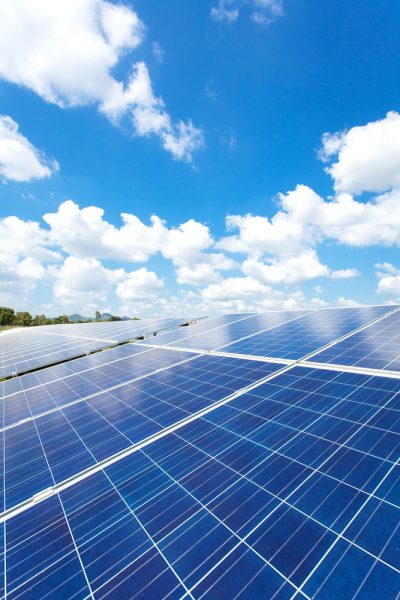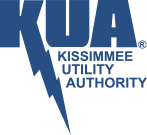Every home is different. There are many factors to consider when calculating the value of installing PV solar. We find that customers who are primarily home during the day tend to benefit more from installing PV solar. Our free home solar energy audit will explain how to calculate energy savings to help determine the overall value of installing a PV solar system.
What is PV solar?
There are 2 types of solar. Thermal Solar & Photovoltaic Solar (PV). Thermal solar uses the sun’s energy to generate heat. Photovoltaic Solar (PV) uses the sun’s energy to generate electricity.
What should I do if I am considering installing PV solar?
KUA highly encourages our customers who are interested in installing PV solar system to schedule a KUA free home solar energy audit, prior to purchasing a system. Our home solar energy audit is designed to educate our customers about the facts and the myths regarding PV solar and will provide you with tools that will be beneficial when shopping for a PV solar system.
I want to install PV solar. What do I need to do?
We highly encourage our customers to consider having a KUA free home solar energy audit prior to purchasing a system but it is not a prerequisite. If the customer elects not to have the solar energy audit, the first step is to select a licensed PV solar contractor to install the system. Once the system is sized & selected, the KUA net-metering documents should be submitted. We request that you submit these documents prior to the system being installed. This will help prevent delays with the customer activating their system. The net-metering documents include:
- An Application
- An Interconnection Agreement (Tier-1, 2 or 3 depending on system size)
- A Tri-Party Agreement
All three documents must be submitted before we can begin processing the customer’s Application for Interconnection. These documents can be filled out and submitted by the customer, but most of the time, the contractor assists the customer with filling out these documents. Once the Application for Interconnection is fully approved by KUA and the system has received a final permit from either the City or County permitting office, we will set the bidirectional meter and the system will be all clear to connect to the grid.
Is PV solar worth it?
Every home is different. There are many factors to consider when calculating the value of installing PV solar. We find that customers who are primarily home during the day tend to benefit more from installing PV solar. Our free home solar energy audit will explain how to calculate energy savings to help determine the overall value of installing a PV solar system.
Are there any KUA rebates for installing PV solar?
KUA offers a net-metering program to purchase any excess renewable generation from the customer. We do not offer any rebates or incentives for customers to purchase PV solar systems at this time.
Are KUA’s electric rates increasing every year?
KUA has not had a base rate increase since 2005.
What happens if there is excess energy produced? Does KUA pay me for my PV solar?
The energy generated by the PV solar system will first supply the energy needs of the home. Excess energy not consumed by the home will flow back through the meter onto the KUA grid. The meter will record this excess energy and the customer will receive a credit on their monthly bill for the energy that their PV solar system sent back to the grid.
Does KUA charge me extra for having PV solar?
There are no additional monthly charges for customers who have installed PV solar.
Will I still have a KUA bill?
Yes. As a customer, you will receive a bill that will itemize any charges/debits for power in addition to the normal services and taxes associated with your account.
How will I get my power when at night?
It is important to note that PV solar only works when the sun is shining. Unless a battery backup system is installed, the home will still have to rely upon the utility to supply their energy needs at night or when the sun does not shine. There are two options that could help offset the amount of energy you use at night.
- Oversize the PV solar system. This option primarily focuses on putting more energy back onto the grid during the day, to offset the amount of energy used at night. Most system designs and their sizing are based on the customer’s average usage, they are not capable of accomplishing this option.
- Practice load balancing. This option focuses on shifting more of the energy needs of the home during the day while the PV solar system is producing electricity. Examples include, but are not limited to, the following: laundry, running the dishwasher, running the pool pump, etc. Using these during the day will use the available power from the PV solar system instead of running them at night and paying for utility power.
How can I tell how much my system will generate?
One of the best PV solar wattage calculators we have found is the PV WATTS Calculator from NREL (https://pvwatts.nrel.gov/). It is a free calculator and is very user-friendly. The website uses the physical address where the system will be installed. Then it will ask for the DC system size, module type, array type, array tilt and system orientation (south being the most ideal). Once all of the information is entered, the calculator will provide a yearly estimate, as well as a monthly breakdown of the anticipated PV solar system production.
How can I tell if my system will generate enough to cover my energy needs?
Because energy consumption differs throughout the year (higher usage in the summer and lower in the winter), the best way to calculate system size requirements is to add up the last 12 months of energy usage for the home and compare it to the NREL estimate of what the system is capable of producing.
Will my system still operate in the event of a KUA outage?
PV solar inverters are grid-tie systems and are required to meet Underwriters Laboratory (UL) 1741 which is a rapid system shut down in the event of a grid outage. The PV system is designed to shut down if the KUA grid goes down. This is to protect the customer’s system as well as any utility personnel working to restore the outage. The PV solar system will only be able to continue operating if your system is installed with a battery backup. The PV solar will continue operating to charge your battery system while the batteries supply electricity for the home.
What is a battery back-up system and how does it work?
During the day when the PV solar system is producing, the system will first supply the energy needs of the home and any excess energy is sent to charge the batteries. If the battery system is fully charged, the excess energy will flow back through the meter to the KUA power grid. At night, when the PV solar system is not producing, the home will draw its initial energy needs from the battery system. If the home consumes more energy than the battery system can supply, that additional energy will come from the utility grid.
What are the advantages and disadvantages of a battery back-up system?
The advantages of a battery back-up system are that it allows the customer
to store the excess energy the PV solar system generates during the day for use at night, instead of relying solely on the utility. In addition, the system can continue to supply energy to the home in the event of a KUA outage. The PV solar system will continue to operate to charge the batteries and the home will draw its energy needs from the battery system.
The disadvantages of a battery back-up system are the cost and the space. Cost is the biggest disadvantage since adding a battery backup system can often nearly double the cost of the PV solar install. Space can also be an issue depending on the type of batteries installed as well as the quantity of batteries needed to meet the energy requirements of the home.
What is Net- metering?
Net-metering is the process of installing a bi-directional electric meter which records the flow of energy in both directions. The meter records the flow of energy from KUA’s grid to the home, and it records the flow of excess energy from the customer’s PV solar system back onto KUA’s grid.
Why do I still have a utility bill?
As a customer, you will receive a bill that will itemize any charges/debits for power in addition to the normal services and taxes associated with your account. It is important to note that PV solar does not produce energy at night. Any energy that is consumed in the home at night is provided by KUA. Oversizing the system in order to put more energy back onto the grid during the day than the home consumes at night can offset the utility bill, but since most systems are sized proportionately to the energy use of the home and not oversized, load balancing becomes the best option for most customers.
How can I get the most out of my PV solar system?
The best way to get the most out of your PV solar system is to work on making the home as energy efficient as possible and load balancing. Energy efficient upgrades can assist with lowering the amount of utility power the home consumes at night when the PV system is not producing. Load balancing refers to running more of motor loads in the home during the day. Running the washer, dryer, dishwasher, pool pump, etc. during the day with the energy from the sun instead of running them at night using utility power.
Can KUA tell me how much my system is generating?
No, our meter only monitors the energy consumed from the utility (at night when the system is not producing) and the excess energy produced by the PV system that wasn’t consumed by the home. We do not monitor system production or how much PV solar energy the home consumes. Your PV solar contractor should be able to assist with system performance monitoring.
Is my excess solar energy stored by KUA for use later at night?
No. Once the excess energy passes backwards through the meter and onto our grid, it becomes a renewable energy credit which the customer receives compensation for on their monthly billing statement.
How can I tell if my PV solar system is working?
Most PV solar inverter companies offer an app or website for monitoring the system production. The PV solar contractor should be able to assist with setting up this type of system monitoring.
Why doesn’t my solar work when the power is out?
PV solar systems without battery back-up cannot operate when there is a KUA outage. The inverter is required by code to disconnect the system in the event of a grid outage. This safety requirement is to prevent the system from feeding energy onto the grid and potentially injuring the line workers who are repairing the outage. It is also designed to prevent surges from damaging the customer’s motor loads in the home. If a battery back-up is installed, the system can continue to operate when separated from the grid and use the batteries as a buffer to protect the customer’s motor loads.
Should I add more panels?
Adding more panels is an option if the system is not producing enough to meet the energy needs of the home. But many times we find it more cost effective to make other energy efficient improvements to the home as opposed to just adding more panels. We highly encourage our customers to schedule a free home energy audit to help evaluate the best course of action and achieve the



